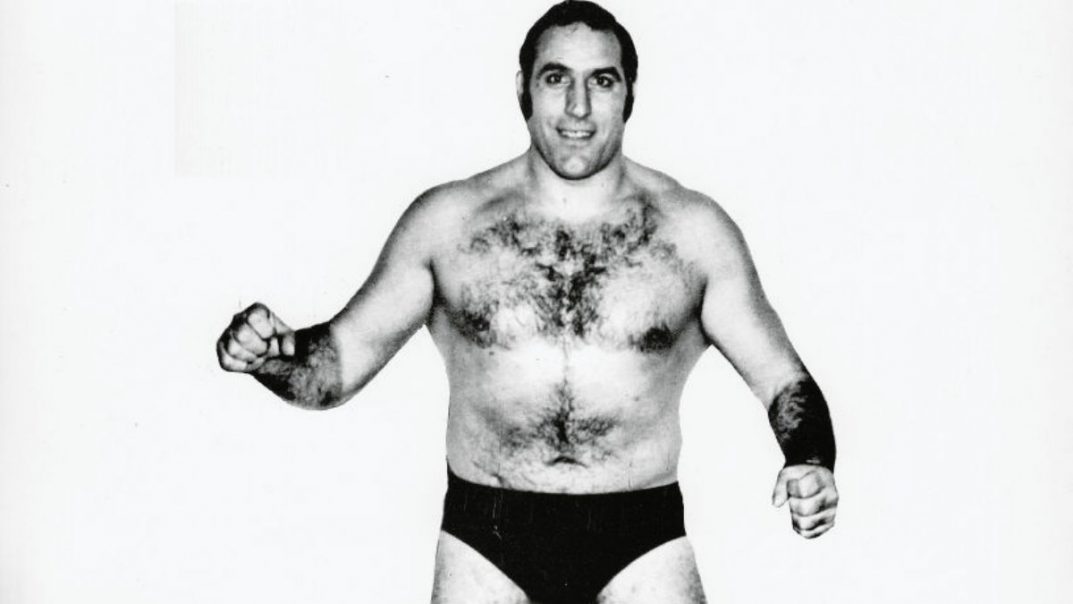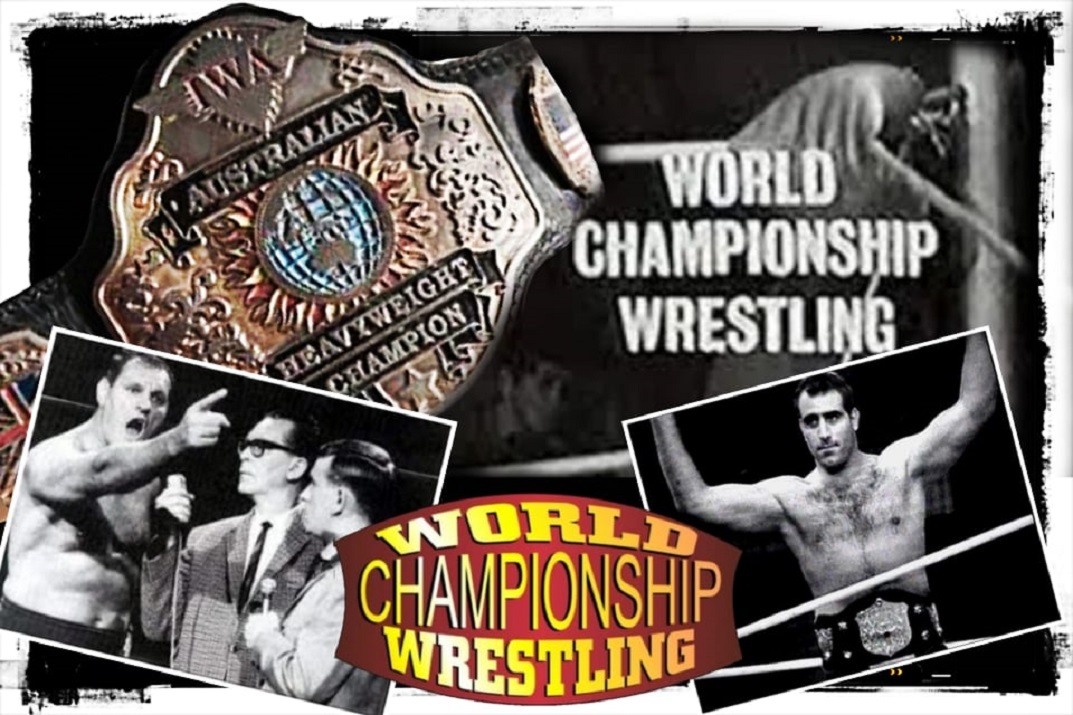World Championship Wrestling Australia. Before it became a poor excuse to share photos of women in bikinis on social media, the initials “W.C.W.” stood for only one thing. World Championship Wrestling remains the entity that has come closest to defeating the WWE.
It has now been twenty years since the promotion ceased operations and was sold off to their rivals. But, before there could be a World Championship Wrestling, there was World Championship Wrestling.
Jim Barnett spent his entire adult life in the wrestling business. He got his start working on a publication owned by wrestler and promoter Fred Kohler in 1949. As Barnett became closer to Kohler, he took on increasingly larger roles in Kohler’s promotion.
Their partnership peaked when the pair were co-owners of the National Wrestling Alliance’s promotion in Indianapolis.
In 1959, Barnett started a new partnership with promoter Johnny Doyle. This allowed him to host shows across a much larger region. His connections to the NWA enabled him to cross-promote events while simultaneously competing against them.
That privilege didn’t last for long, and neither did their early success. They were slowly losing people who were willing to work with them. Their position in the industry was slipping away.
World Championship Wrestling Australia
Barnett decided that their best chance to survive was to begin again in an untapped area. Somewhere that the NWA didn’t yet have a foothold. They went to scout Australia as a potential location.
They went there with the misconception that the country had a very small wrestling scene if it had one at all. To their joy, their assumptions were proven to be false.
Australia had been a popular wrestling territory throughout the 20th century. Legendary wrestlers and promoters had been touring the country for decades before Barnett and Doyle had arrived.
Numerous independent companies had regular talent exchanges and cross-promoted events with other countries, particularly Japan. Like with most countries, wrestling declined during The Great Depression and World War II.
It would thrive as a form of entertainment as the nation recovered from both events. All of this went relatively unheard of in North America. Part of the reason was because it wasn’t financially viable for wrestlers or promoters to cross to the opposite corner of the Pacific.
Those who did had to ensure the money was good or plan to stay in the host country for a long time.
Any Australian or New Zealand wrestlers who made the journey to the U.S. or Canada were often treated as novelty acts due to the small number of them in a region at any time.
World Championship Wrestling – Australia
The bigger reason why Americans knew so little about the Australian wrestling scene is because Australians knew little about themselves. Commercial television was still in its infancy.
Networks were dependent on importing content from other countries, particularly America and the U.K. This included wrestling.
All of Australia’s wrestling companies were small independent promotions. None of them had been broadcast nationally. Barrett and Doyle saw a potential gap that they could take advantage of.
The duo returned from their scouting trip for just long enough to sell off their American wrestling assets. Once they had their affairs in order, they returned to Australia to launch a new promotion.
Rumors circulated that Barnett had a more sinister reason for wanting to leave the U.S., but those speculations were nothing more than that.
Barnett and Doyle founded World Championship Wrestling in 1965. Their intention from the first minute was to make it Australia’s first major wrestling promotion. They took inspiration from some of the more successful NWA promotions in the U.S.
They aggressively sought a deal with a major television network. In order to stand out, they had to give themselves an aura of legitimacy that their competition did not have.
The First-Ever Wrestling Company Broadcast Nationally in Australia
They chose to become part of a sanctioning body. Australia did not have one yet, and they did not want the NWA to be involved. Therefore, they created their own.
The International Wrestling Alliance would become a genuine sanctioning body with their own World Heavyweight Championship.
The existence of the IWA helped to negotiate a deal with Nine Network. As a result, WCW would become the first-ever wrestling company to be broadcast nationally in Australia.
Australia had a lot of homegrown talents available. As they didn’t have national exposure, they were unknown outside of their own regions. WCW had to acquire some big names from outside of the country in order to draw crowds.
Both men had made plenty of contacts throughout their careers. Even then, their first big signing was a major acquisition for them.

Kowalski, Sammartino and more..
Killer Kowalski had been competing in televised World title matches for around fifteen years. In the months before joining WCW, fans had seen him hold the NWA World Heavyweight Championship and challenge Bruno Sammartino for the WWWF’s main title.
He had also made international headlines when opponents got injured in his matches. The biggest headline was when he injured famous boxer, Jack Dempsey.
The pugilist was refereeing one of Kowalski’s matches when he was accidentally struck with a mistimed kick. This was an innocent mistake, and so was most other incidents that put Kowalski’s name in newspapers.
The stories would always get embellished by the time they went to print. In any case, they helped to build Kowalski’s reputation as a vicious brawler. The promoters decided to make Kowalski the inaugural IWA World Heavyweight Champion.
On October 23rd, 1964, Kowalski successfully defended the title against Dominic DeNucci in WCW’s first-ever main event. The match helped to attract around 6,000 spectators in Sydney Stadium.
The company bounced around Sydney, Melbourne, and Brisbane as they put on multiple shows a week. Kowalski appeared at most of them. But he would not be the star of this new promotion. That honor went to DeNucci.

World Championship Wrestling – Australia
DeNucci had spent most of his career in Dino Bravo’s shadow. He had adopted the Canadian icon’s surname and the role of his younger brother and weaker tag team partner. DeNucci had only recently tried to shine on his own.
He found the spotlight he sought in Australia. Around 9,000 fans were in Melbourne’s Festival Hall on the night that DeNucci became the first man to actually win the World title.
Kowalski remained a constant threat to DeNucci as champion. Stars from around the world would test their might against him. They often had to prove their mettle against Kowalski before they could get that shot.
Anyone who assumed beating Kowalski was the hardest part of the challenge didn’t stand a chance against DeNucci.
At one point, DeNucci brought in WWWF Champion Sammartino to aid him against tougher threats. He also helped bring more attention to WCW by touring regularly with the NWA. As a result, DeNucci would hold the title for a record four times.
WCW had always planned to have a tag team division once they were big enough. When it finally came to fruition, it all seemed a bit chaotic. The titles were introduced in the main event of their show on July 1st, 1966.
Larry Hennig and Harley Race lost the titles the first time that they were ever contested. It was not uncommon to see someone who had lost the titles later team with one of their opponents to regain them.
The Flying Scotts
The most decorated tag champions held the gold with multiple different partners. By default, The Flying Scotts (Gary and Sandy Scott) were the most unified team by holding the titles together on three occasions without ever substituting partners.
Titles changed hands so frequently that one team could win the titles on TV one week, and a different team would be defending the next. Some title changes have been called into question because records were not properly kept.
If rumors could be verified, then at least two title changes took place in the United States.
“I was there during the very famous War, the people’s army King Curtis, Mark Lewin, Spiros Arion, Mario Milano, Sheik Wadi Ayoub vs. Big Bad John’s Army, Bulldog Brower, Abdullah the Butcher, Cyclone Negro, Waldo Von Eric, The Great Tojo. Many other stars were in these groups throughout that year.
In 1978, they had a young Rick Martel here, Andre the Giant, Bruiser Brody, and Harley Race. They had 6,000 fans every Saturday night at Festival Hall.
They worked all over Australia 5 days a week, and it was on TV twice a week for one hour. It was so popular. They started the season in February, and it ran right through to the second weekend in December.
We were watching these super athletes at the top of their game really inspired me to be the best that I can.
We also had a vast range of local wrestlers who were fantastic, like Ron Miller, Larry O’Dea, Ken Medlin, George Barnes, Les Roberts, John Schneider, Sam Rossi, Jim Dimeros, Fred Burger, Andy Harpas, and of course the legendary Roy Heffernan. So much Inspirational talent.”
– Former Australian Wrestler Ken’ The Dazzler’ Dunlop on the WCW Australia.
WCW joined the NWA in 1969. The changes were subtle at first. Some of their biggest stars were already competing for the NWA in the U.S. more regularly than they were for WCW. The company always had a revolving door to international talent.
More prominent names were coming to Australia, but they weren’t staying as long. They were relying on Spiros Arion, Mark Lewin, and Mario Milano to be their mainstays.
In 1972, the company replaced their IWA titles with two new NWA championships. For a company based in Australia, very few Australians ever held either championship. In fact, no one from the Southern hemisphere ever held the IWA World title.
This was the first to be replaced. In April, Arion beat Karl Kox to become the first NWA Austra-Asian Heavyweight Champion.
The inaugural NWA Austra-Asian Tag Team Champions
Jimmy Golden and Dennis McCord defeated Brute Bernard and Gary Hart that December to become the inaugural NWA Austra-Asian Tag Team Champions. Even though WCW struggled to keep big stars, attendances and viewership remained stable.
They regularly featured international attractions, including Andre the Giant, Ox Baker. Skull Murphy and the Brisco Brothers.

After his investments in the Australian Open golf tournament proved to be a massive success, he aggressively pursued cricket. It came at a critical time.
Cricketers began to feel undervalued after the move to color television. However, the combination of Packer’s investments, ideas, and handling of the Australian team’s tour of the U.K. won the Test and County Cricket Board over.
A new competition called World Series Cricket was founded in 1977, and the Nine Network were awarded exclusive broadcasting rights. WCW was dropped from the network a year later.
Without television exposure, both WCW and wrestling, in general, went into a major decline. As a result, the company closed down, and Barnett returned to the U.S.
“WCW Australia had a huge impact in bringing awareness of Pro Wrestling to the country. Not only did the TV time create national stars but the touring names would create a buzz in town.
After the closure of WCWA, it left a massive void for decades that is only starting to be recreated again now.”
– Former Australian Wrestler, Pro Wrestling Post Blogger – Andrew ‘The Shark’ Carter.
Barnett would become a part-owner in Georgia Championship Wrestling. He would name some of their shows “World Championship Wrestling.” It was at this time that his former promotion was retroactively renamed WCW Australia.
The name would be reused again when Barnett became involved with Jim Crockett Promotions. Eventually, it became the name of the more well-known World Championship Wrestling.










